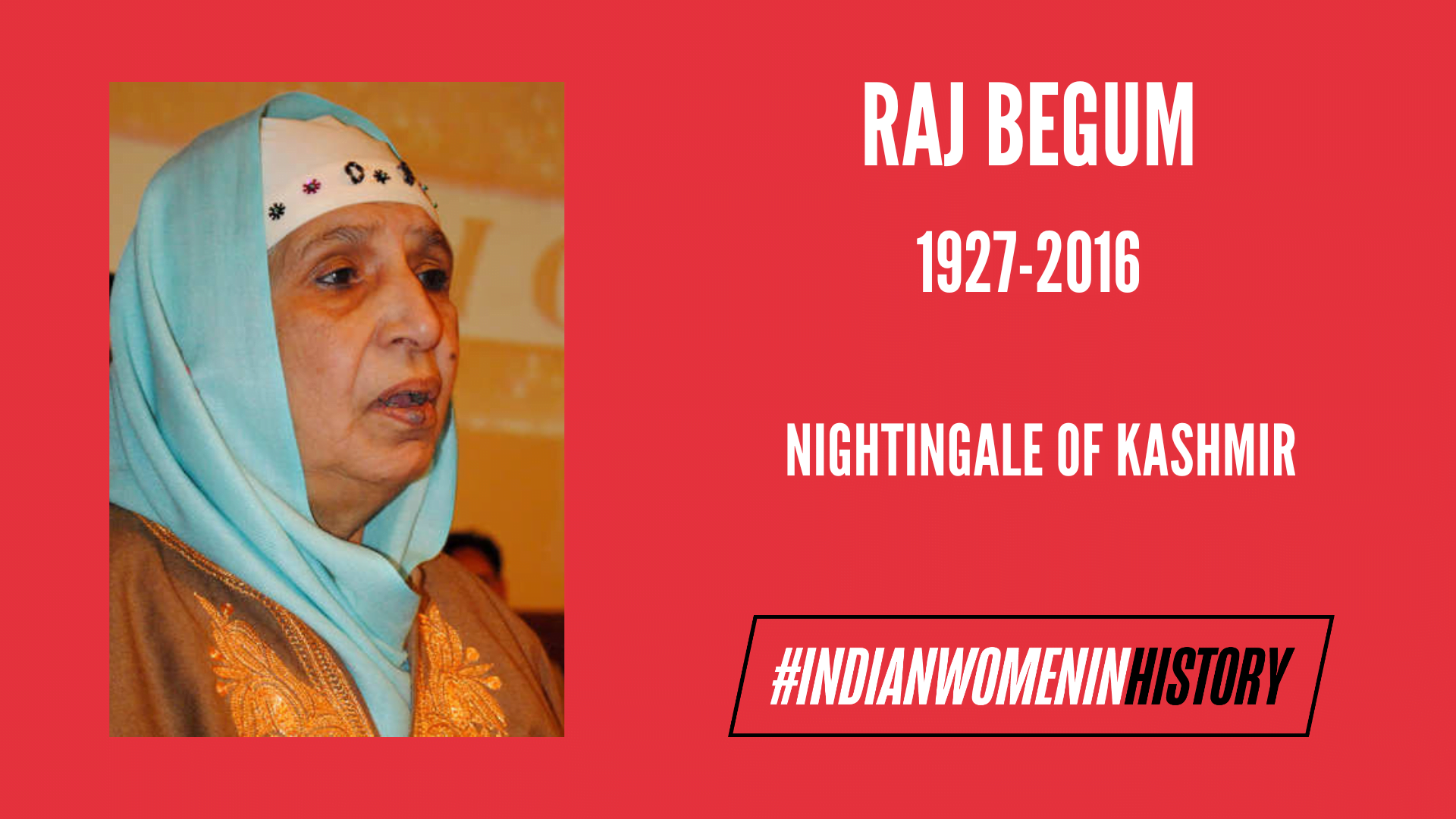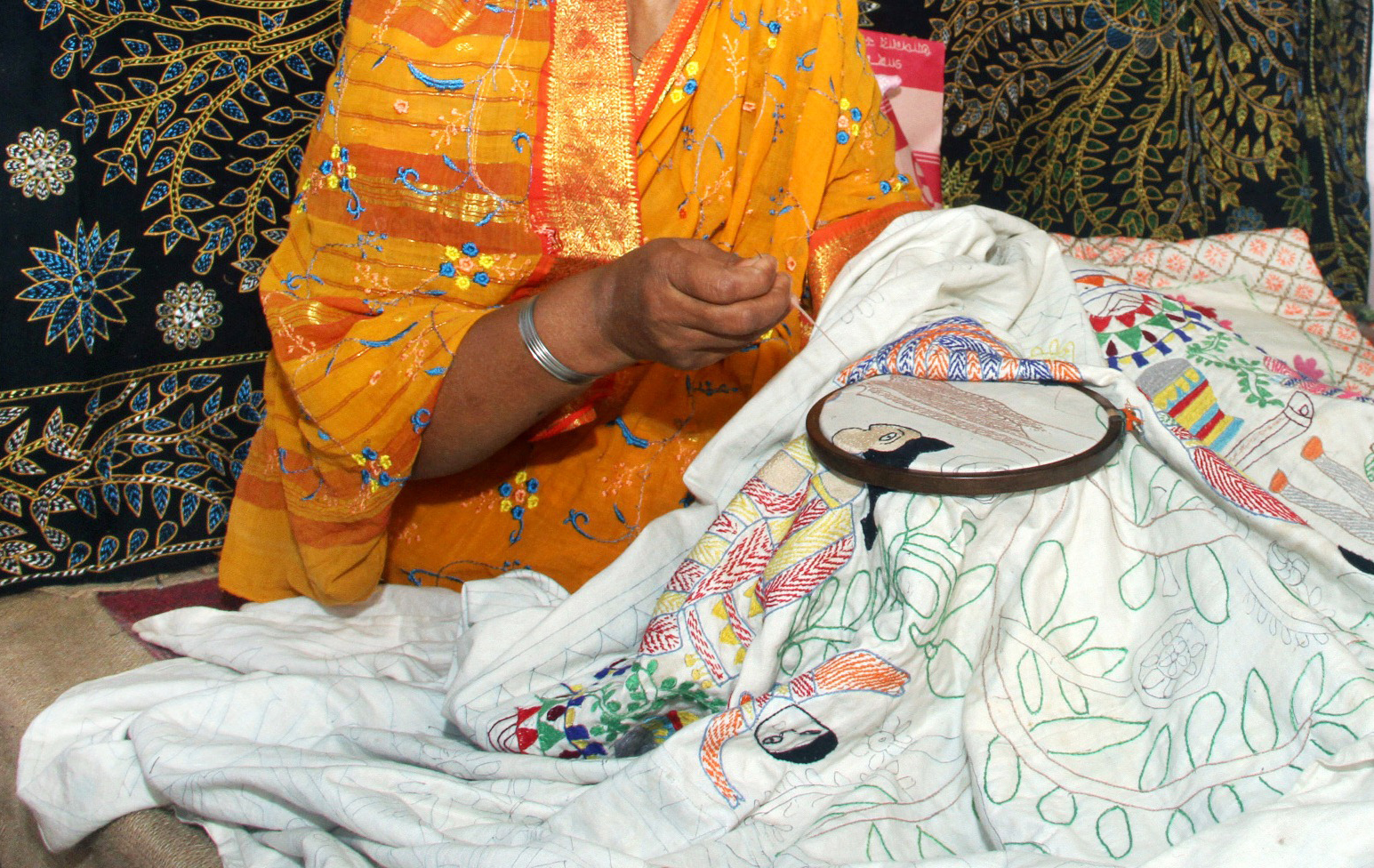Raj Begum was a pioneer of strength, liberation, wisdom and talent that Kashmir has produced in its history. She is famously known as the nightingale of Kashmir or the melodious Queen of Kashmir. Her singing career started during her childhood as she started singing at weddings, and gatherings while growing up.
Pent-up emotions, loss, grief, success, and various anecdotes started to take the form of art, and the ownership of life came as creative expression. One such development came as Radio Kashmir which started broadcasting Kashmiri musical programs.
In addition to fighting social oppression and challenging existing norms, she equally fought against her family to pursue her passion and perform in public.
In 1954, Ghulam Qadir Langoo introduced Raj Begum who started singing at Radio Kashmir and gained immediate popularity due to her unique and melodious singing. She successfully rendered songs in Gulrez and went on to sing with Radio Kashmir until 1986.
Born in Magarmal Bagh located in Srinagar, she made a stalwart impression during her initial time by singing at weddings. Later, she rose as one of the most admiring and loved Kashmiri female voices starting post-independence majorly reigning in broadcast media.
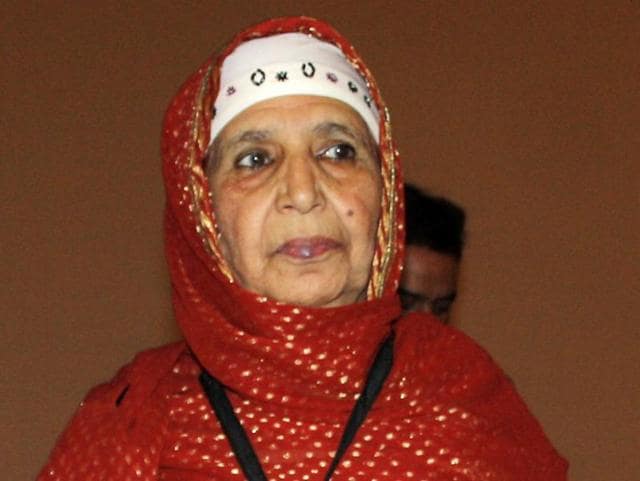
Raj Begum sang many different genres like folk, religious, light, romantic, ghazals Etc and no one knows the number of songs which were sung by her. In those days songs which were sung in broadcast media were not possible to be recorded due to lack of equipment henceforth no one knows the number of songs she sang.
Also Read: Habba Khatoon: The Greatest Poet And Peasant Queen Of Kashmir | #IndianWomenInHistory
Raj Begum broke several barriers that come up with being a female singer along with conventional cultural and historical constructions which are resorted on women. High pitches and sonorous voices almost took constant head-on with cultural restrictions on women and gave new hope of freedom to women belonging to Kashmir.
Raj Begum and her musical journey
Begum started practising music at a very young age and was a prodigious talent who quickly rose to success and was successful in grabbing the attention of people. Her family was part of the Royal Court of Nawabs of Awadh, a Muslim dynasty that ruled a large part of Northern India. Her father was a popular figure who was a sarangi player and a prominent vocalist and her mother, Naseer-un-Nida Begum, was a talented singer. Her parents constantly encouraged her and were massive support in building her endeavour with singing.
The genesis of literature mostly oral comes from the urge to express emotions. Oral tradition is a representation of collective cultural findings through voice. Female voices have often faced differentiated challenges in the male-dominated discourse of cultural appropriation. Often, the limited voices which found the stage acted as a form of destigmatising myths, cultural practices, social satire and also at times in the form of resistance.
Begum tearing structural boundaries
In Kashmir, folk songs are an exceptional example of woman’s discourse not only providing an authentic perspective of culture but also bringing out voices which were confined due to structural inequalities.
The folk song which expanded and replicated several forms of anecdotes, representing Yaarbals (bathing ghats with steps), Yaarbal is the meeting place of friends as yaar in Kashmiri and Persian. The passing of such songs from one generation to another also became an essential element in the fight against forgetting memories, the course of history, repression and oppression. These folk songs were an attempt to keep the collective form of memory intact and also acknowledge the voice of Kashmiri women who are dominated majorly by males.
One of Begum’s major contributions to the world of music is her introduction to a new form of music known as Thumri. Thumri can be defined as a type of semi-classical Indian music that is characterised by its romantically devotional lyrics. Raj Begum’s Thumri was known for its delicate phrasing and intricate melodic ornamentation and theft quickly became popular throughout India.
Raj Begum’s Thumri was also known for its delicate phrasing and its complex nature of melody which quickly touched the heart of people. Her understanding of ragas and talas used in music has only escalated her popularity in the region along with her ability to compose music.

Her composed music is still freshly alive in the heart of Indians and her contribution to Indian Music is recognised by scholars and historians around the world.
The ladder to success wasn’t smooth sailing for her as a woman coming from a male-dominated society and with the cultural barriers associated strongly, especially with women. Women back in the 18th and 19th centuries didn’t have enough freedom to perform in public and Raj Begum had to fight a lot of battles to get recognised as a legitimate musician. She faced criticism and opposition from several quarters but ultimately her talent and dedication won the battle, achieving accolades and success as a stalwart of talent and dedication.
Also Read: Arnimal: Kashmiri Bard of Love And Lyricism | #IndianWomenInHistory
Even in urban areas and cities, women still find it difficult to navigate oppression and sets of taboos while pursuing their aspirations and have to be cautious about their movements, attire, and behaviour while accessing different spaces. Men are accustomed enjoy the privilege of accessing different spaces both personally and publicly which reduces their challenge as compared to women.
Women relying on their performance in private settings
From the feminist lens, it is extremely crucial to understand how music has been historically represented and dominated by men due to the existence of gender oppression.
In addition to fighting social oppression and challenging existing norms, she equally fought against her family to pursue her passion and perform in public.
Her success was also influenced by the limited opportunities, lack of support and the quality of work offered to her. Women at that time were not allowed to perform in the courts of rulers and they frequently had to depend on performing in private settings considerably for female audiences.
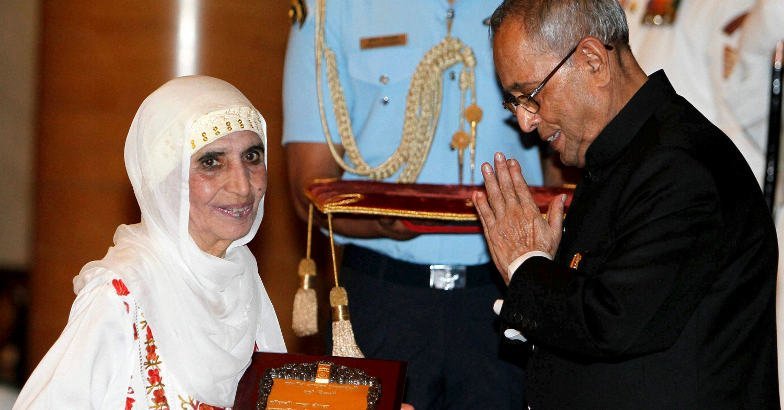
This restricted her exposure and ability to gain recognition across the world of Indian Classical Music. Despite all of the challenges of criticism and opposition, Raj Begum went on to achieve recognition. Some traditionalists in the world of music resisted her style and ability to mix different traditional music and instead saw her as a threat to the sanctity of Indian classical music.
Her success was also influenced by the limited opportunities, lack of support and the quality of work offered to her. Women at that time were not allowed to perform in the courts of rulers and they frequently had to depend on performing in private settings considerably for female audiences.
Her experiences highlight how gender inequality can hamper the growth of a woman as an individual and limit opportunities for them. Societal norms are deeply ingrained and implanted in humans and can often end up being the barrier to growth and development.

Her success and legacy also reflect her power of determination and passion that drove her towards irresistible popularity in addition to her euphoric talent and dedication towards music.
Also Read: History Of Women Creating Political Expressions Through Embroidery, One Stitch At A Time
“Her Theme of Freedom”
Struggles and experiences still live in their lives and are taken as examples in the feminist movement’s fight against stigma and serve as an inspiration to many generations of women.
The Ministry of Information and Broadcasting of Government of India also produced a documentary on her life named as “Her Theme of Freedom- Raj Begum- The Melody Queen of Kashmir.” It was broadcasted at several locations in the nation.
Raj Begum breathed her last and left for her heavenly abode due to her prolonged illness on October 26, 2016, although her singing accolades and spectacular work made her immortal and remain a paramount legacy.
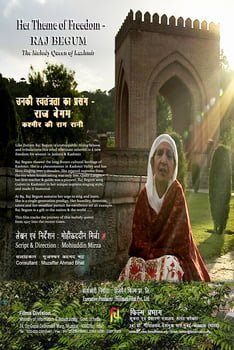
To remember her exemplary contribution to folk music and as a tribute to her Jammu and Kashmir Cultural Academy organised a folk music show at Tagore Hall where female singers of the valley performed popular songs of Begum.
About the author(s)
Ritwik is a northeastern Bahujan who has been a journalist for 2 years. He has also been a UN fellow for the year 2021-22. He has worked on several papers like writing about reportage in broadcast media on women impacted by floods in the northeast. He is currently working on queer representation in the regional press of Assam. Most of the work focused on gender, sexuality, intersectionality, climate change, marginalised and vulnerable communities and data journalism.
He has been a contributing writer at Youth ki Awaaz, Feminism in India and Swaddle for the last 4 years.
